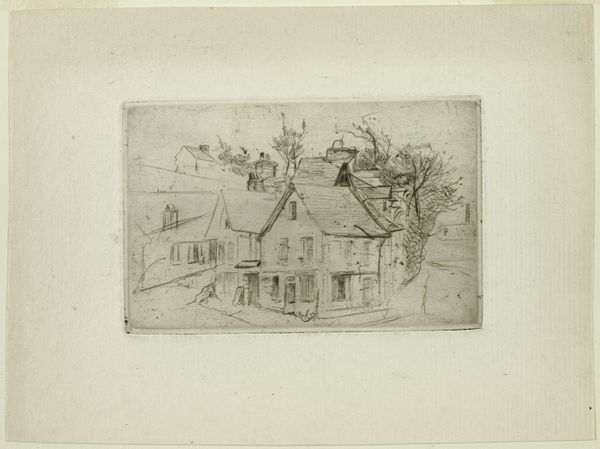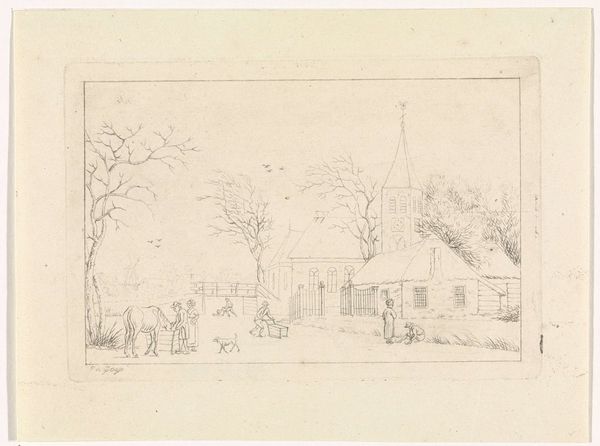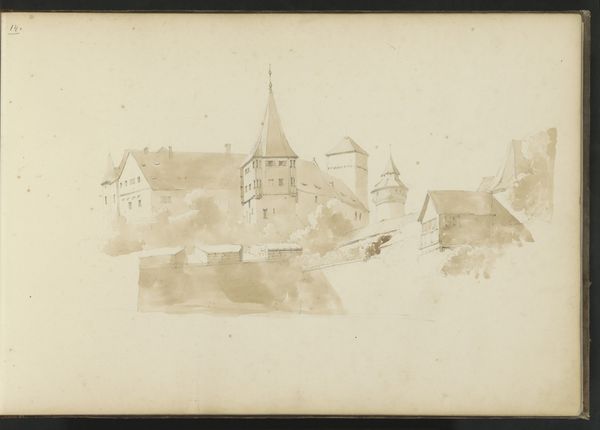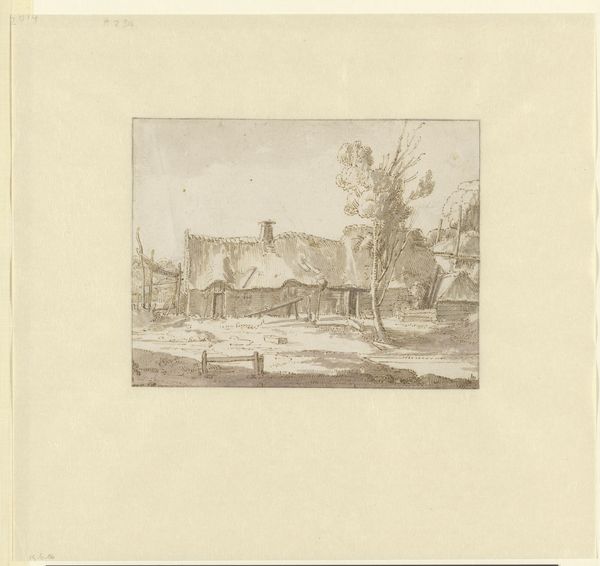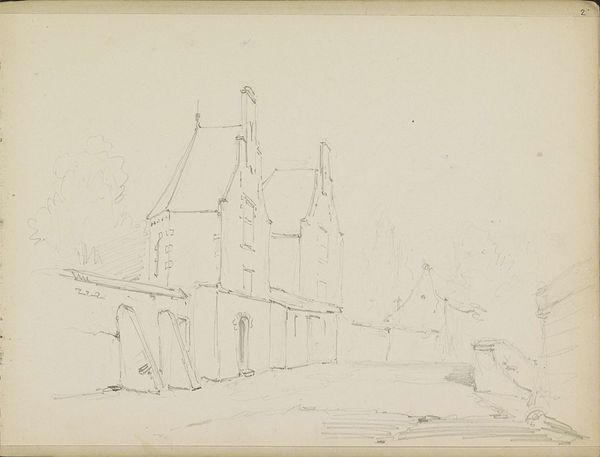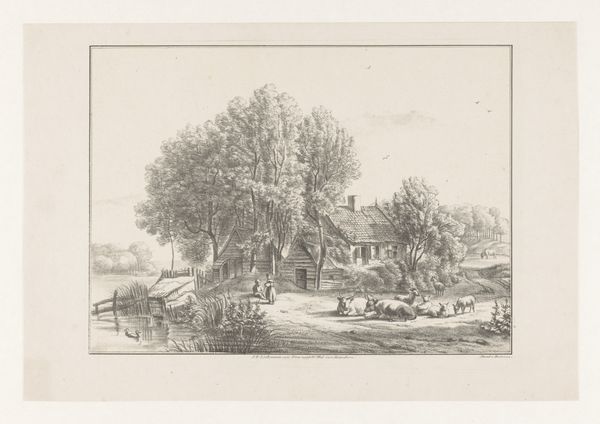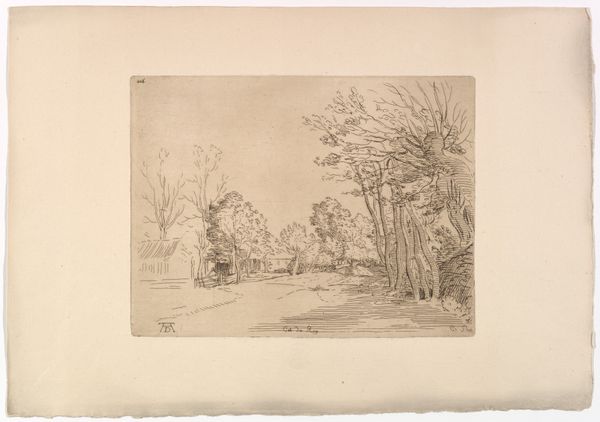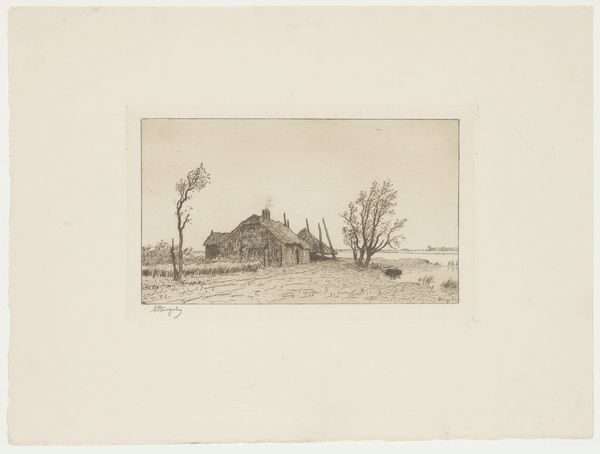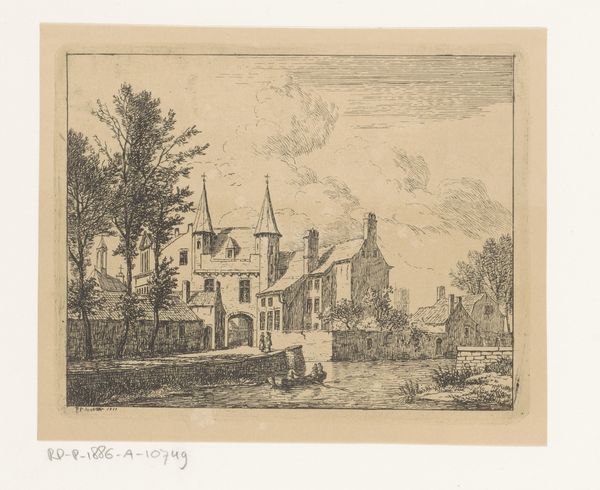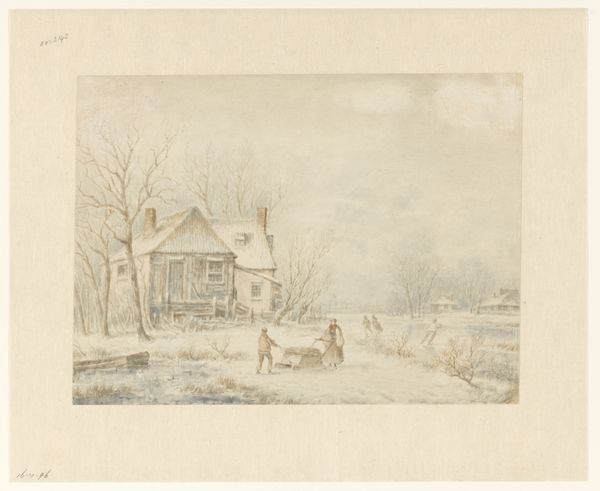
drawing, paper, ink
#
drawing
#
dutch-golden-age
#
traditional media
#
landscape
#
paper
#
ink
Dimensions: height 165 mm, width 285 mm
Copyright: Rijks Museum: Open Domain
Curator: Abraham Rademaker produced this drawing, "Het huis Bakelaar," sometime between 1686 and 1735. It's currently held in the Rijksmuseum. Editor: The overwhelming greyscale lends a distinctly somber tone. It feels austere, almost like a record of something lost. Curator: Rademaker was known for his topographical drawings. This piece is created with ink on paper and rendered in a landscape style, reflecting the artistic conventions of the Dutch Golden Age. Consider the period when the Dutch Republic was at its zenith, a time of intense social stratification alongside flourishing artistic achievement. Does the image invite scrutiny of power structures, or is it an exercise in idealising nature and wealthy landowners? Editor: The composition definitely leads the eye. It’s divided into three distinct horizontal bands, punctuated by those skeletal trees. The way the architecture looms, despite being somewhat veiled in mist or diluted ink, does create a clear focal point. But it is very simple: foreground with small human figures, the water, then the house and then sky. Curator: Those figures could indicate several things, from laborers to tenants—highlighting that while country estates provided tranquility and beauty for some, others faced constrained access to land and resources. Consider too the function of this drawing. Could it have served as a promotional tool, displaying the affluence and property ownership that defined the elite? Editor: Yes, but I’m most interested in Rademaker’s delicate inkwork. Look at how he uses different line weights and washes to create depth and atmosphere. Notice how he's made those distant gables less and less solid? The strategic use of empty space—particularly in the sky—almost destabilizes the image despite its traditional subject. There is very subtle tonal variation throughout the wash, with a high contrast for the figures giving them extra presence in the frame. Curator: By juxtaposing artistic technique with historical analysis, we might uncover layers of meaning. Dutch Golden Age art wasn't simply representational; it engaged in dialogue about identity, economics, and social order. It offers the opportunity for discussion across time. Editor: Indeed, analyzing how Rademaker depicts architectural forms alongside natural elements gives insight into contemporary aesthetics and his individual style. I can see both form and social commentary here.
Comments
No comments
Be the first to comment and join the conversation on the ultimate creative platform.
